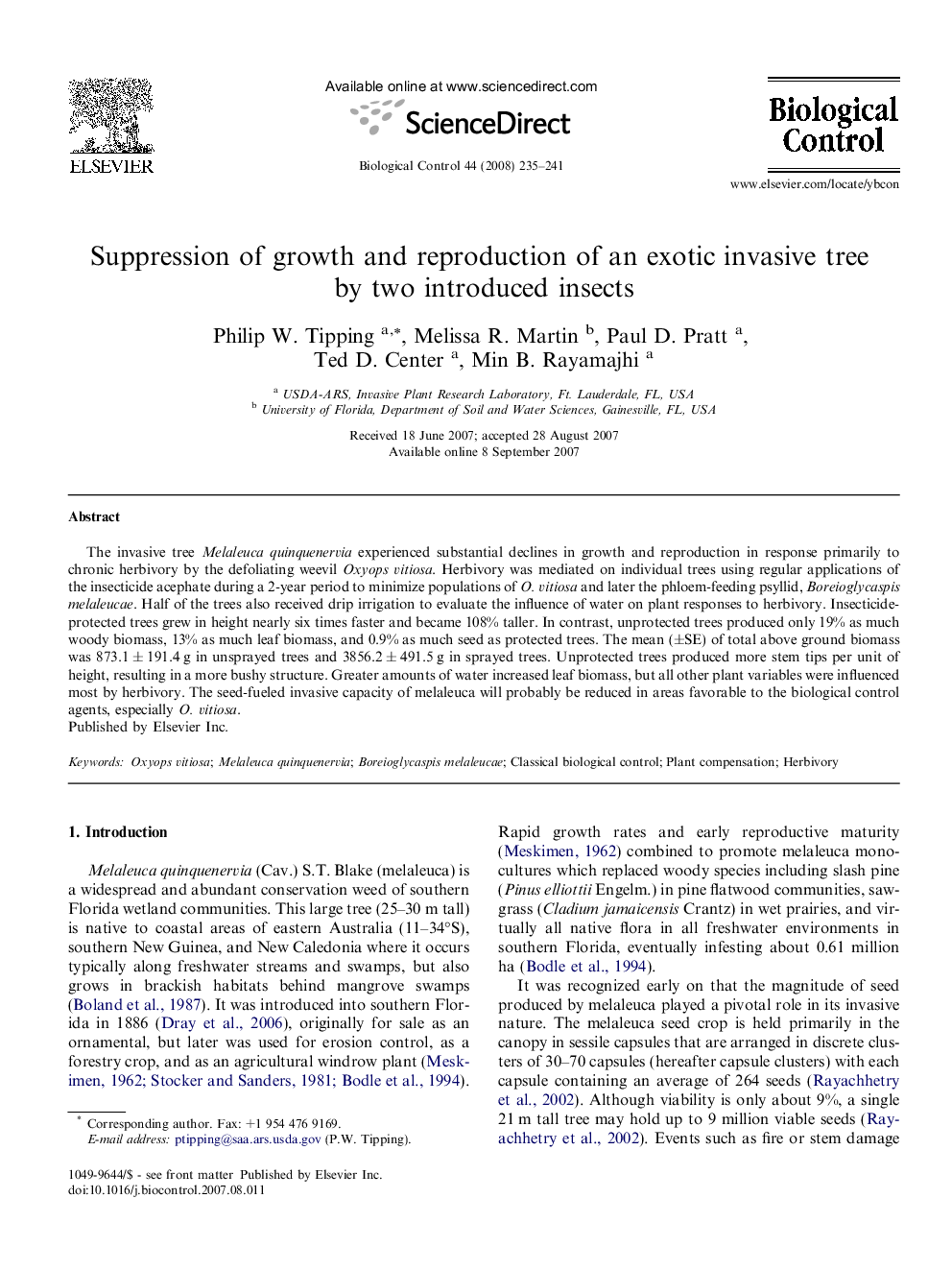| Article ID | Journal | Published Year | Pages | File Type |
|---|---|---|---|---|
| 4504903 | Biological Control | 2008 | 7 Pages |
Abstract
The invasive tree Melaleuca quinquenervia experienced substantial declines in growth and reproduction in response primarily to chronic herbivory by the defoliating weevil Oxyops vitiosa. Herbivory was mediated on individual trees using regular applications of the insecticide acephate during a 2-year period to minimize populations of O. vitiosa and later the phloem-feeding psyllid, Boreioglycaspis melaleucae. Half of the trees also received drip irrigation to evaluate the influence of water on plant responses to herbivory. Insecticide-protected trees grew in height nearly six times faster and became 108% taller. In contrast, unprotected trees produced only 19% as much woody biomass, 13% as much leaf biomass, and 0.9% as much seed as protected trees. The mean (±SE) of total above ground biomass was 873.1 ± 191.4 g in unsprayed trees and 3856.2 ± 491.5 g in sprayed trees. Unprotected trees produced more stem tips per unit of height, resulting in a more bushy structure. Greater amounts of water increased leaf biomass, but all other plant variables were influenced most by herbivory. The seed-fueled invasive capacity of melaleuca will probably be reduced in areas favorable to the biological control agents, especially O. vitiosa.
Keywords
Related Topics
Life Sciences
Agricultural and Biological Sciences
Agronomy and Crop Science
Authors
Philip W. Tipping, Melissa R. Martin, Paul D. Pratt, Ted D. Center, Min B. Rayamajhi,
